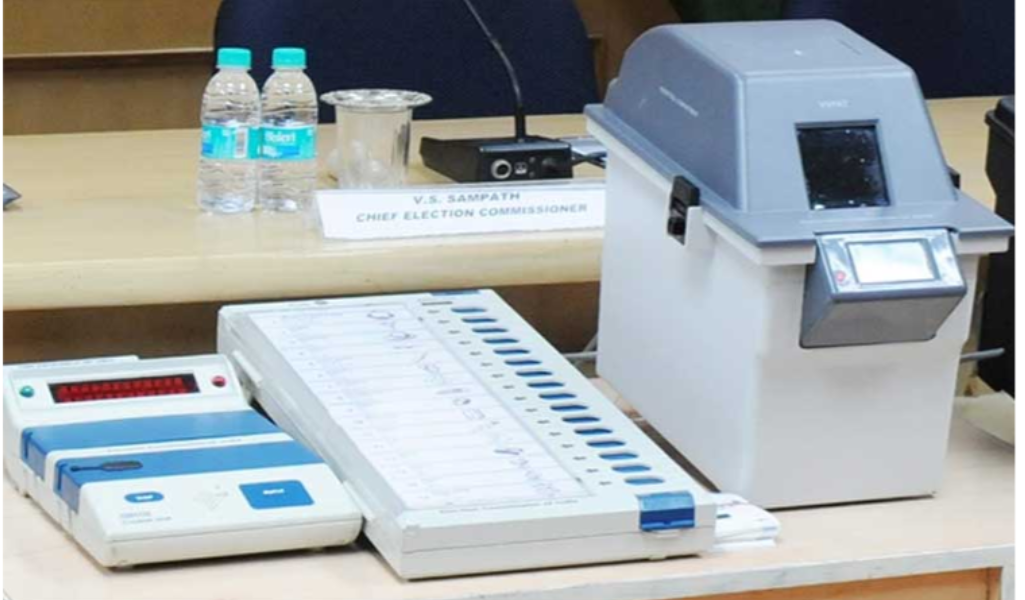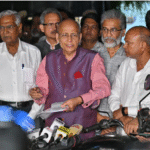Upholding Electoral Integrity (EVMs):-
In the annals of democratic governance, the integrity of the electoral process stands as a cornerstone of legitimacy and trust. In India, where the electoral machinery orchestrates the world’s largest democratic exercise, the sanctity of the voting process is paramount. Amidst debates surrounding the use of Electronic Voting Machines (EVMs) and concerns over tampering, the unequivocal stance of the Election Commission (EC) in the Supreme Court (SC) reaffirms the robustness and reliability of EVMs as a bulwark against electoral malpractice. This article delves into the veracity of the EC’s assertions, dissecting the technological safeguards and procedural mechanisms that render EVMs impregnable against tampering at any stage of the electoral process.  for more information click on this link
for more information click on this link
Historical Context: The adoption of EVMs in India represents a watershed moment in the evolution of the electoral process. Introduced in a phased manner since the 1990s, EVMs have gradually replaced traditional paper ballots, offering numerous advantages in terms of efficiency, accuracy, and transparency. Over the years, the EC has continually refined and upgraded EVM technology to address concerns regarding security and reliability, ensuring that the electoral process remains sacrosanct.
The EC’s Affirmation in the Supreme Court: In (EVMs) response to petitions challenging the integrity of EVMs, the Election Commission of India (ECI) unequivocally affirmed the inviolability of EVMs in the Supreme Court. Citing extensive technical evaluations, rigorous testing protocols, and procedural safeguards, the EC underscored the foolproof nature of EVMs, asserting that they are immune to tampering at any stage of the electoral process. The EC’s submission in the SC constitutes a resounding defense of EVMs as the linchpin of electoral integrity in India.
Technological Safeguards: At the heart of the EC’s assertion lies a suite of technological safeguards that fortify EVMs against external interference. From tamper-proof hardware to cryptographic algorithms, EVMs incorporate state-of-the-art security features that render them impervious to manipulation. The use of dynamic coding, secure boot mechanisms, and stringent authentication protocols ensures that only authorized personnel can access and operate EVMs, thereby minimizing the risk of unauthorized tampering.
Moreover, EVMs operate in an isolated environment, devoid of any external connectivity, which precludes the possibility of remote hacking or infiltration. The absence of wireless communication capabilities further mitigates the risk of cyberattacks, ensuring that EVMs remain insulated from external threats. Additionally, stringent physical security measures, including 24×7 surveillance, tamper-evident seals, and stringent chain of custody protocols, safeguard EVMs throughout their lifecycle, from manufacturing to deployment.
Procedural Mechanisms: In (EVMs) addition to technological safeguards, the EC has instituted robust procedural mechanisms to uphold the integrity of the electoral process. Prior to each election, EVMs undergo comprehensive testing and certification by independent technical experts to verify their functionality and reliability. Mock polls, mock counting, and randomization procedures further validate the accuracy and integrity of EVMs, instilling confidence in stakeholders and voters alike.
During the actual voting process, EVMs are deployed under strict supervision, with multiple layers of scrutiny and oversight. Polling agents representing various political parties are present at each polling booth to monitor the proceedings and ensure compliance with electoral norms. Post-election, EVMs are subjected to rigorous post-poll scrutiny, including mock counting and logic tests, to verify the accuracy of results and detect any anomalies.
Public Confidence and Transparency: The EC’s unwavering commitment to transparency and accountability underscores its efforts to dispel any doubts or apprehensions regarding the integrity of EVMs. Through extensive voter education campaigns, public demonstrations, and stakeholder consultations, the EC endeavors to foster public confidence in the electoral process. Furthermore, the availability of Voter Verifiable Paper Audit Trails (VVPATs) provides voters with an additional layer of assurance, allowing them to verify their votes before casting them electronically.
In (EVMs) conclusion, the Election Commission of India’s unequivocal affirmation of the inviolability of Electronic Voting Machines (EVMs) in the Supreme Court underscores the robustness and reliability of India’s electoral infrastructure. Through a combination of technological safeguards, procedural mechanisms, and transparency initiatives, EVMs stand as a bulwark against electoral malpractice, ensuring the integrity and credibility of the electoral process. As India continues its democratic journey, the EC’s steadfast commitment to upholding electoral integrity serves as a beacon of hope and inspiration, reaffirming the foundational principles of democracy and the rule of law. Also read:-Democracy in Action: Phase 1 of India’s Electoral Journey




